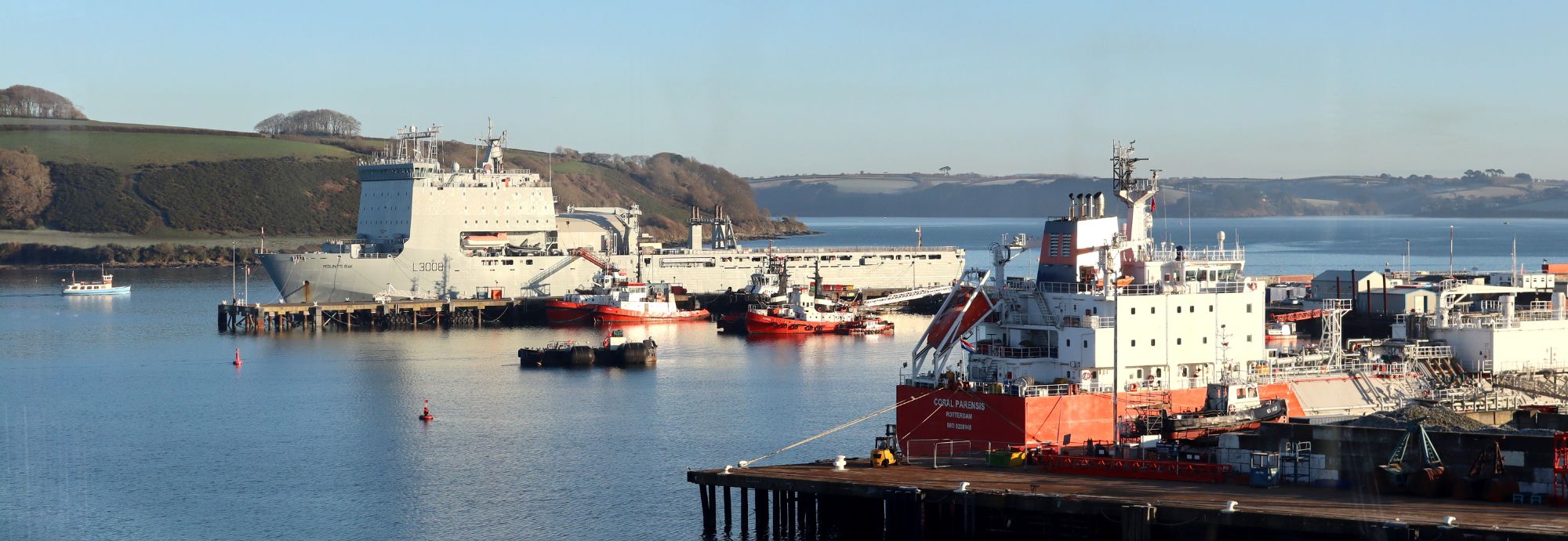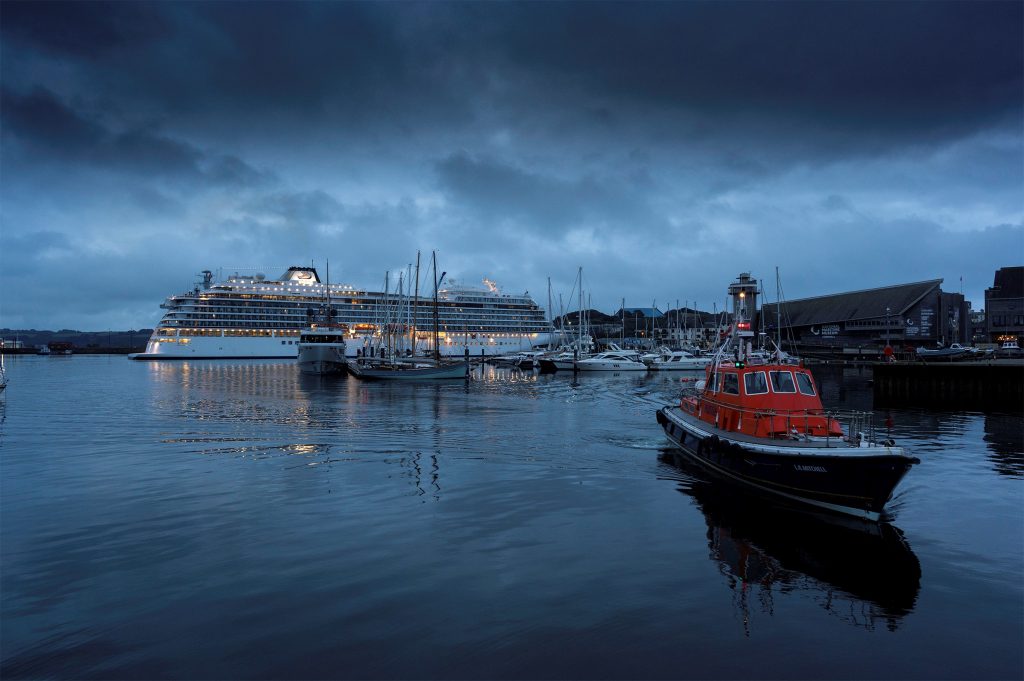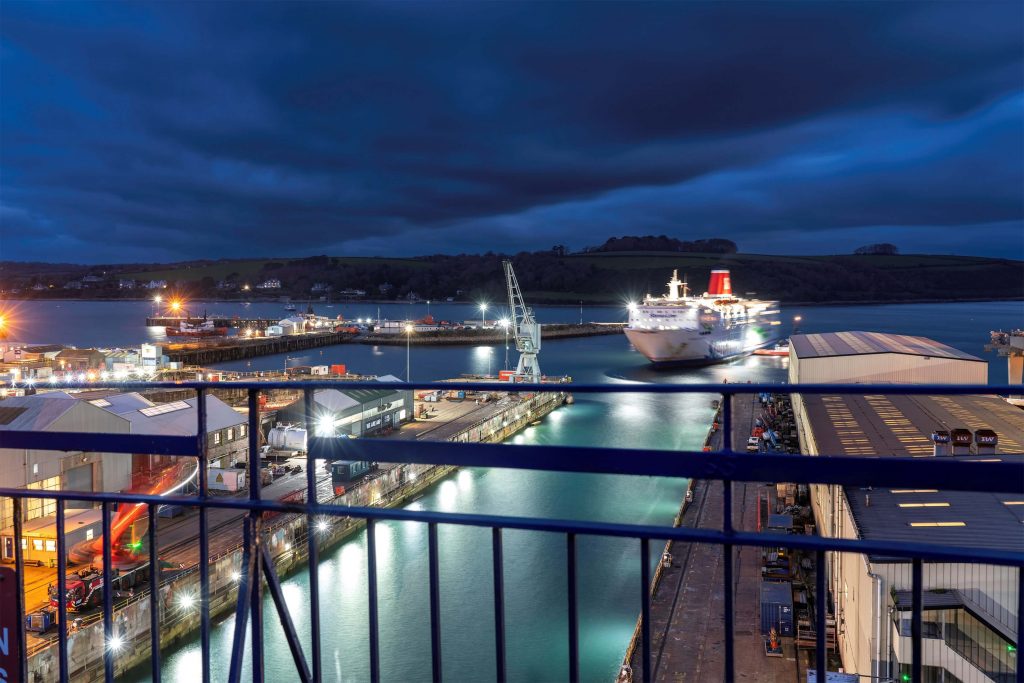

Harbours are bustling and dynamic places. They are alive all hours of the day, with a plethora of unique sights and sounds that set them apart from other environments.
Here are just five examples for you to keep your eyes peeled and your ears to the ground for, the next time you pay a visit to a working harbour!
Water salutes are a ceremonial practice that involves a boat – usually a tug or a fire boat – using the powerful hoses that it has installed onboard primarily for firefighting purposes to shoot arcs of water high into the air as it escorts another ship into the harbour.
They are a show of respect and can be done to mark things like the maiden voyage of a new ship, the visit of a warship, or the retirement of a senior captain. It is not simply done for any and every ship, which makes the occasions when it does happen all the more significant!
In January 2024, RNLI lifeboat Richard Cox Scott welcomed a new tug – Morva – with a water salute as it arrived in Falmouth to start work with the A&P Group.
Water salutes aren’t exclusive to the maritime world either – they can also be done by firefighting trucks at airports for planes!

Falmouth pilot boat L K Mitchell and cruise ship Viking Neptune. Photo: Michael Kelland.
One of the smaller types of craft that you might spot in a harbour, pilot vessels are vital to their safe operation. As their name suggests, their purpose is to shuttle pilots to and from large ships who want to enter or leave the harbour. These pilots have in-depth knowledge of local waterways (things like hazards, currents and water depth) and the safest, most efficient ways to navigate them.
The pilot vessel will manoeuvre alongside the larger ship, and the pilot will use a ladder to climb onboard. They temporarily become part of the crew on the bridge, helping to thread the ship through the eye of the needle until it is where it needs to be. Once their duty is complete, they return to the pilot vessel and make their way back to shore.
Falmouth currently has two such vessels – the 16.7-metre-long Arrow, built in 2006, and a newer state-of-the-art pilot boat Atlantic – which are identifiable by their blue, white and orange liveries (as well as the word ‘pilot’ very handily written on the side!). A previous vessel, the ageing L K Mitchell, was replaced by Atlantic in 2024.
Buoys come in a variety of shapes, sizes and colour schemes that denote different things. As well as being used as mooring points for boats and ships, they are used to mark out waterways and help ensure safe navigation through them.
For instance, there is a type of red buoy that is known as a ‘Port Lateral mark’. As a ship makes its way towards a harbour, it should keep these buoys – which are either cylindrical or square in shape – on its left side. Green ‘Starboard Lateral marks’ – triangular or conical in shape – should be kept on its right side. When leaving a harbour, the opposite applies – red on the right and green on the left.
Other important buoys include the black and red striped Isolated Danger mark – which, as the name suggests, warns of small hazards in the water immediately around it such as rocks – and the red and white striped Safe Water mark. This, in contrast, indicates that the water around it is open and entirely navigable.
In 2022 a series of small yellow buoys were introduced by Falmouth Harbour in partnership with the Ocean Conservation Trust to mark out sensitive underwater habitats made up of seagrass and maerl, a type of algae. The buoys aimed to deter vessels from mooring overhead and potentially causing damage to the habitats with their anchors.
Falmouth also has a larger yellow buoy at the southern end of the Carrick Roads estuary named the ‘Crossroads Buoy’. It can be used by a range of vessels – from barges to superyachts – up to 180 metres in length with a draft of 10.5m. It is ideally positioned to shelter these large ships from strong winds.

Falmouth Docks at night. Photo: Michael Kelland.
In 1996 a set of regulations was introduced in the UK by the Maritime and Coastguard Agency that included a section setting out how vessels are expected to use their horn or whistle to communicate with each other – like how car drivers are expected to use their indicator to show other drivers which way they are planning to turn. Some of these signals can be heard being made by boats as they navigate their way around a harbour:
Have you ever looked at a boat or ship and noticed a stream of water coming out of a small hole in the side? There are a couple of main reasons for this happening within the confines of a harbour – and no, it doesn’t mean the ship is sinking!
One reason is that the water will have been used as part of the vessel’s cooling system, pumped around its inner workings to cool not just the engines, but also the generators that provide electricity for things like lighting and air conditioning that need to run even when the ship is at anchor.
The second main reason is that ships need a way to drain water – be it from wet weather, waves or general cleaning – from their decks, lest it create problems for the crew or equipment. This water is channelled across the deck to these holes, which are called ‘scuppers’, and allowed to drain overboard.

National Maritime
Museum Cornwall Trust
Discovery Quay
Falmouth Cornwall
TR11 3QY
View Map
See our opening hours
Tel: +44(0)1326 313388
Email: enquiries@nmmc.co.uk